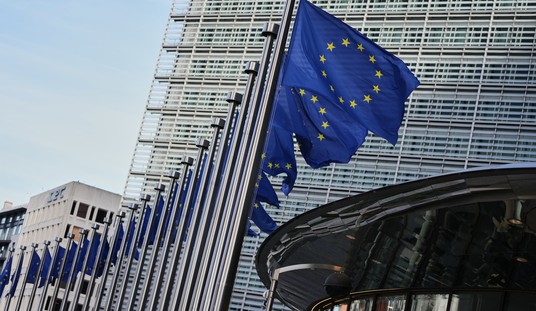I'll get to various positive and negative developments on the Wuhan Coronavirus below, but first, a Wednesday Twitter thread from Dr. Scott Gottlieb caught my attention. As more and more Americans seem to be taking the disease more seriously, increasingly heeding social distancing and other mitigation guidance, I've been thinking a fair amount about what happens a few weeks from now. My sense is that people can handle serious societal and economic disruption for a matter of weeks, not months.
A recent New York Times story about the British government's (aborted) response plan reported that the jettisoned policy at least partially rested on social scientists' admonition that the public will only tolerate severe distancing policies for so long. Whether it's two, four, or six weeks, what happens next? A vaccine would likely take over a year to develop, test and produce. What happens in between initial 'curve flattening' and eradication? Could part of the answer lie in masks -- which we were told not to wear as a preventative measure? This is interesting:
If we're at the point of locking down entire cities, we must consider other ways to break off transmission that don't take away peoples' liberty. CDC's current position is that people should only wear a mask when you're sick. But we know this is spread by Asymptomatic people 2/n
— Scott Gottlieb, MD (@ScottGottliebMD) March 18, 2020
People should still be required to stay home if sick, but that's hard to enforce. Requiring a procedure mask for those who go out in areas of sustained spread (like some big cities) would be a second layer of protection when people are asymptomatic or defiant 4/n
— Scott Gottlieb, MD (@ScottGottliebMD) March 18, 2020
Gottlieb then links to a Times op/ed arguing that the previous governmental guidance on mask-wearing was either wrong all along, or is at least outdated at this point:
It is of course true that masks don’t work perfectly, that they don’t replace hand-washing and social distancing, and that they work better if they fit properly. And of course, surgical masks (the disposable type that surgeons wear) don’t filter out small viral particles the way medical-grade respirator masks rated N95 and above do. However, even surgical masks protect a bit more than not wearing masks at all. We know from flu research that mask-wearing can help decrease transmission rates along with frequent hand-washing and social-distancing. Now that we are facing a respirator mask shortage, the federal Centers for Disease Control and Prevention is recommending that surgical masks are “an acceptable alternative” for health care workers — again, obviously because some protection, even if imperfect, is better than none.
In the face of this, publicly presenting an absolute answer — “You don’t need them” — for something that requires a qualified response just makes people trust authorities even less...the W.H.O. and the C.D.C. told the public to wear masks if they were sick. However, there is increasing evidence of asymptomatic transmission, especially through younger people who have milder cases and don’t know they are sick but are still infectious. Since the W.H.O. and the C.D.C. do say that masks lessen the chances that infected people will infect others, then everyone should use masks.
The piece goes on to note that placed like Taiwan and Hong Kong adopted universal mask-wearing early on, and their control over the pandemic is far greater than ours. It's clear that healthcare workers are the priority for masks, and the government is taking steps to ensure more availability for those professionals. That is the right move in the short term, in light of the dangerous shortage (the Vice President said today that tens of millions of masks are currently in production). But as we look toward the future, perhaps producing far more procedural masks for average Americans could be a mitigating step that can help matters if any when ongoing distancing becomes inoperative or impractical. "Remember, prior guidance in U.S. discouraged a mask but it was a time when there were probably hundreds and maybe low thousands of cases (and officials maintained there was no community spread). Now there are clear hot spots and sustained transmission so risk has grown a lot," Gottlieb concludes. He's been a leading indicator of coming attractions for weeks now, so this is something to consider.
Meanwhile, on a potentially hopeful note, a new Italian study reports that the vast majority -- 99 percent -- of the country's Coronavirus-related deaths are among people who had another medical condition. So yes, the very elderly and people with comorbidities are by far at the greatest risk. But (a) it's on everyone to help protect these vulnerable people (this is why the Surgeon General is urging people to act as if they're infected), and (b) as we've been writing about for days, there are serious potential issues for young, healthy people, too. To wit:
Recommended
A Belgian doctor working to battle the coronavirus says he’ s treated several seriously ill young patients — and their lung scans were “ nothing short of terrifying, ” according to reports. Dr. Ignace Demeyer, who works at a hospital in Aalst, said an increasing number of people between the ages of 30 and 50 have presented with severe symptoms, despite having “ blank medical records” that show no underlying conditions that would make them high-risk, the Brussels Times reported. “ They just walk in, but they are terribly affected by the virus” ...
Youth and relatively good health are not invincibility factors. Finally, because this post was pretty pessimistic about the trajectory of this pandemic -- and the time horizon to getting back to anything resembling "normal" -- read this more optimistic take. Could mitigation efforts -- maybe including masks and viral treatments (seriously, read this) --- help us get through this less painfully than feared? Maybe. Widespread and aggressive testing seems like a prerequisite for that. I'll leave you with more thoughts on that question here, along with a morbid reminder of how serious this moment is here.
UPDATE - This is a pretty cool and innovative way to potentially catch and contain new outbreaks very early.


